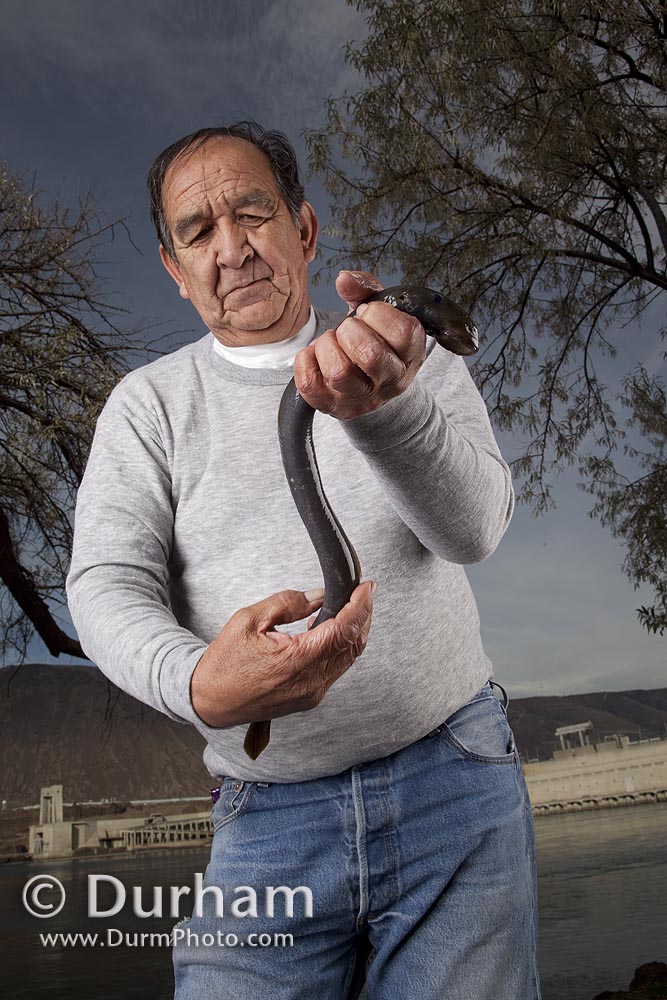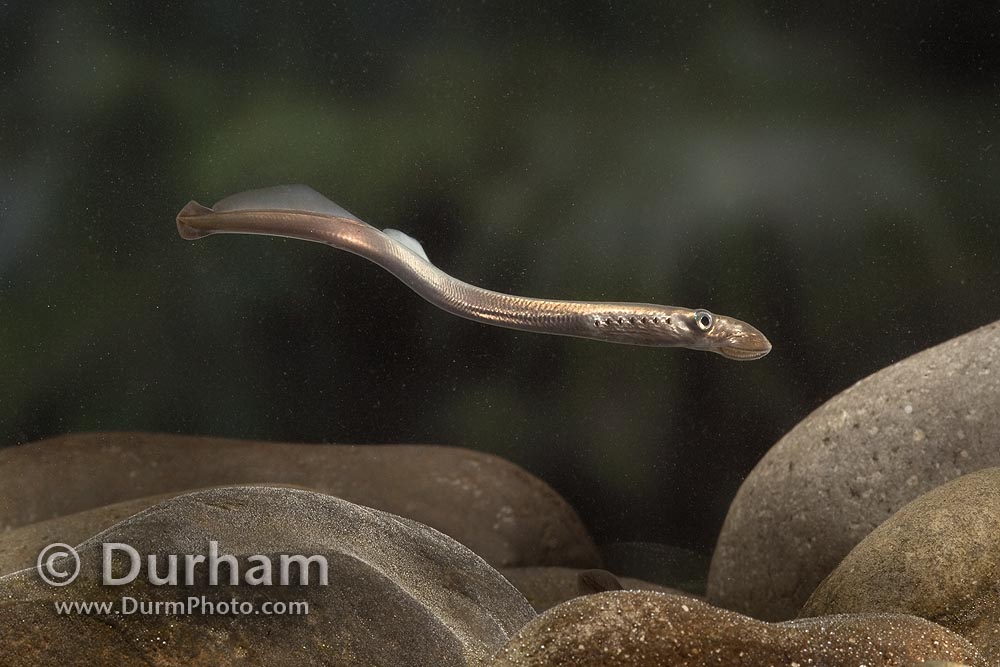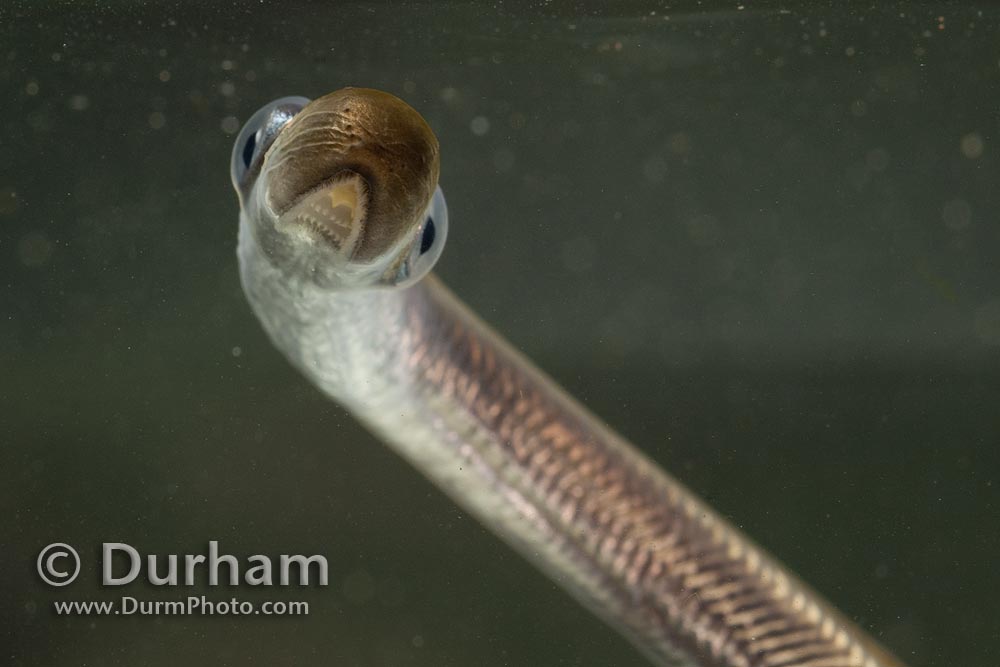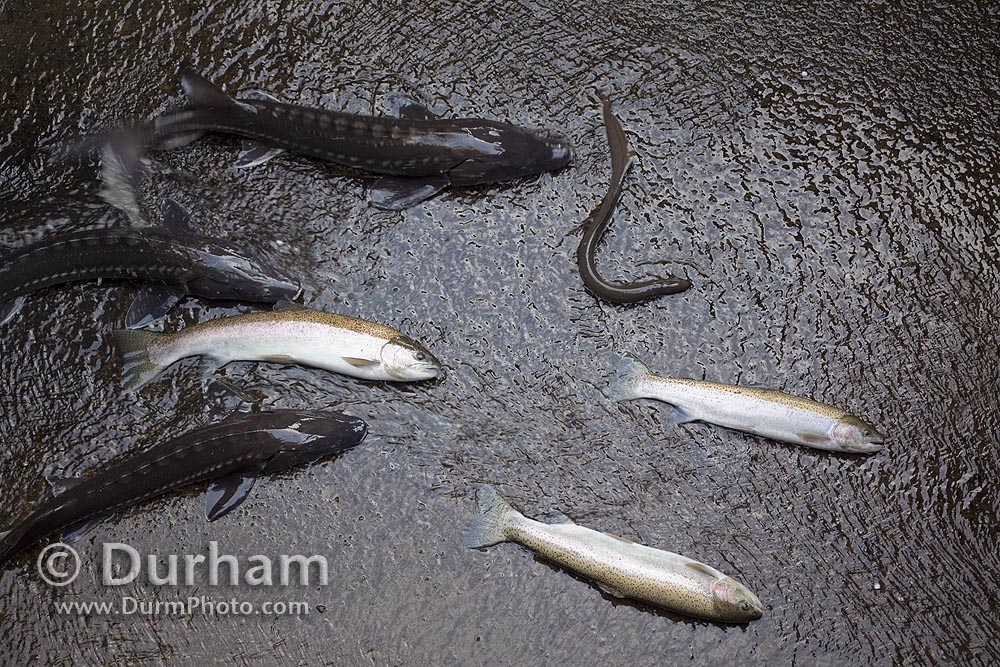in the previous post I touched upon the ecological importance of pacific lamprey (Lampetra tridentata), but did not mention how culturally important this fish is to native american tribes in the Columbia Basin. Lamprey are still collected at Willamette Falls in the spring by Warm Springs and other tribes, but as you head up river into the interior, lamprey are becoming quite scarce.

pacific lamprey (Lampetra tridentata)
Elmer Crow Jr, a Nez Perce Elder and Technical Supervisor for the Nez Perce Department Of Fisheries told me about a time in his childhood when lamprey were an important source of food in winter. They contain more calories and protein than a typical salmon, and many tribe members depended upon the fish to make it through the lean times.
Elmer Crow Jr, a Nez Perce Elder and Technical Supervisor for the Nez Perce Department Of Fisheries holding a lamprey
Now Mr. Crow and other members of the Nez Perce are actively trying to re-establish populations of lamprey in their home country. By collecting stranded lamprey at Dams along the Columbia and releasing them into the clear water streams and tributaries in their tribal lands.
Pacific lamprey from the Columbia River
The hope is that eventually the population will re-bound and the Nez Perce and other tribes will be able to depend upon lamprey again. The rivers and other animals will benefit as well, as lamprey are a vital part of the ecosystem.








